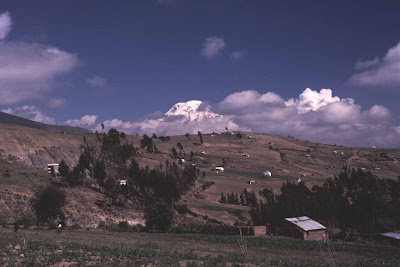Mt. Redoubt chugging away, as seen from the Kenai Peninsula
Mt. Ranier looms over Seattle.
Mt. St. Helens lost about a cubic mile of material when it erupted and showered much of the northwestern U.S. with ash.
Crater Lake, in Oregon - a collapsed volcanic caldera.
Mt. Shasta, another volcano in the California portion of the Cascades
Mt. Lassen at the southern terminus of the Cascades.
Volcan Atitlan in Guatemala
Hike up Antigua's active volcano, Guatemala
Antigua and it's volcano. Antigua is a colonial town that has been destroyed more than once by earthquakes.
Cerro Verde, near Sonsonate, El Salvador. Growing coffee in the rich soil on the slopes of a volcano.
Caldera, Masaya Volcanic Park, NicaraguaOmotepe Volcano from Masaya Volcanic Park, Nicaragua. From this
Lake Omotepe and one of its two volcanoes, Nicaragua
Volcan Arenal erupting (about 20 times a day), Costa Rica
And again.
A pyroclastic flow down the flanks of Volcan Arenal.
Volcan Irazu, Costa Rica
Mt. Chimberazo, Ecuador
Flight over the Andes from Quito to Cuenca, Ecuador
Volcanoes on the Bolivian Altiplano.
More volcanoes on the Altiplano
Volcan Lauca, northern Chile.
Lanin volcano, south-central Chile.
Volcan Osorno, southern Chile.
Volcan Hornopiren, Chilean Patagonia.
Torres del Paine, Chilean Patagonia.
Multi-colored crater lakes, Kelimutu, Isand of Flores, Indonesia
Steaming jungle, smoking volcanoes and ancient temples. Borobudur, Java, Indonesia.
"Tsunami" is a Japanese word, after all.
Japan's signature volcano, Fuji-san.

Mt. Fuji sunrise from Kitadake, Japan.

















































